The city’s 30th chief took the helm as police confronted a violent-crime uptick, tension with elected leaders and strained community relationships. Spirits are higher now, but the past year wasn’t without its own tests.

By Kelli Smith
Eddie García approaches his second year as Dallas police chief with an exuberance that he says hasn’t wavered since he became the city’s top cop.
And why not? He has the support of City Hall. Violent crime is down. Even the police association presidents, who historically battle with any chief, give him good, if cautious, marks. García recently told The Dallas Morning News that the job is “a dream come true” and Dallas is “a destination spot” to be a chief.
García became the city’s 30th police chief on Feb. 3, 2021, as the department confronted an uptick in violent crime, tension with elected leaders and strained relationships with the community after the 2020 demonstrations against police brutality.
The past year also wasn’t without its own tests. An officer was killed in a crash 10 days into García’s tenure. An officer was accused of ordering the slayings of two people. And a city employee deleted more than 8 million files of police data from a server.
There also have been questions about the discipline or lack thereof that some officers accused of wrongdoing have received and about García’s transparency on these issues and others with the public.

The chief said maintaining the drop in violent crime will be a major focus in his second year. He acknowledged that crime fluctuates and said the department is prepared to pivot should adjustments be needed to his policies on hot-spot policing, disrupting criminal networks and changing the behavior of high-risk offenders through arrests, community involvement and social services.
When García was selected as chief in 2020, murders had surged nationwide and in Dallas. Now, the city is regarded as a bright spot that bucked a national trend in 2021 of increased homicides and violent-crime rates. More than two-thirds of the nation’s most populous cities saw in uptick in homicides in 2021, but Dallas had a 13% drop in murders compared with 2020.
“We’re a long way from where we want to be,” García said. “Our goal is to be the safest large city in America. That’s our goal. I think we can start by trying to be the safest large city in the state of Texas and then grow from there. But nothing happens overnight.
“That part certainly is a marathon, not a sprint.”
These days, spirits are higher in City Hall and the department even as challenges remain. City Council members have repeatedly commended the chief in monthly public safety meetings for turning the department around by keeping violent crime down and connecting with the community.
As part of the chief’s crime plan, the department heightened resources in 51 “hot spots” — 330-foot-by-330-foot grids in Dallas where rates of violence are high — by increasing general law-enforcement visibility and surveilling, deterring and arresting repeat offenders there. Violent crime in the targeted grids went down significantly; the weekly average decreased from about 10 offenses to four.
Still, community leaders and activists voiced an ongoing need for progress on issues like transparency and the culture inside the department.

John Fullinwider, a longtime Dallas activist and co-founder of Mothers Against Police Brutality, said it’s too soon to measure García’s success. He said the chief has proved capable, but he’s not impressed with the violent-crime plan and some of García’s disciplinary decisions for officers accused of excessive force.
Praising the chief for his crime plan is premature because social conditions engender crime, Fullinwider said. Many of the strategies, such as hot-spot policing, are nothing new, he said, and historically city officials start off happy with a new chief before riding the chief out of town.
“I’ve got a wait-and-see approach, but there are plenty of signs here that we’re not looking at fundamental change,” Fullinwider said.
“To change a police chief, however good they are, does not change the culture and history of this police department,” he added. “And the culture and history can be defined in one word: unaccountability.”
4 main goals
In García’s eyes, his first year began the moment he was hired in late 2020. The 51-year-old describes himself as a blue-collar chief who got to work formulating a plan to reduce violent crime. He spent five years as top cop in San Jose, Calif., after joining that department in 1992.
As a lifelong Dallas Cowboys fan, the chief said his eyes were set on the city long before he arrived.
He said he knew there was hesitation about his selection, adding that he saw plenty of “Don’t California my DPD” posts on social media. His status as an outsider who’d spent nearly 30 years as a California cop stirred some skepticism, according to police and city leaders.
Those doubts faded quickly after the chief arrived, they said.

“I think he recognized that not being from Texas, and not knowing really Texas, he was going to have to come in and sell himself to the rank and file,” said Mike Mata, president of the Dallas Police Association. “He was fully committed to going out there and answering calls, which he does all the time.”
García outlined four main goals when he was selected, which he maintains: reducing violent crime, improving department morale, increasing community trust and ensuring that his successor is from Dallas. He said he hopes to remain chief for five years and says choosing an outsider is a sign the department needs major change.
In an online poll the city conducted before García was selected, about 3,000 people, most of whom said they were Dallas residents, said they hoped to see the next chief focus on reducing crime, holding officers accountable and strengthening community trust.
García’s primary directive when he was hired was clear: Reduce violent crime. García praises the officers on the streets for accomplishing that.
In 2021, overall violent crime was down about 9% from the previous year, and the decline was most evident in the months after García’s reduction plan was launched May 7. Before the chief’s arrival, Dallas police recorded 254 homicides in 2020, a level of bloodshed the city hadn’t seen in more than a decade.
In 2022 so far, homicides are slightly up, according to Dallas police statistics.
Through Tuesday, there had been 21 murders in 2022, compared with 19 to that point in 2021. Slayings this year include Crystal Rodriguez, 18, killed in a drive-by shooting as she slept in her Old East Dallas home; Brionne Williams, 24, gunned down in her Pleasant Grove apartment; and Anthony Maynard, 26, fatally shot over living arrangements.
City Manager T.C. Broadnax, who selected García out of seven finalists, said the chief’s first year was productive and successful.
“I appreciate Chief García’s focus, energy and enthusiasm to make Dallas the safest large [city] in the country,” Broadnax said. “And I look forward to the department building on their success in the year ahead under his guidance.”
‘I only have one speed’
García said he only knows how to be chief one way: “I’m going to go as hard as I can for as long as I can.”
The chief’s schedule varies each day. He meets with commanders and community leaders and speaks at various functions. He connects often with the department’s Internal Affairs Division, which handles administrative reviews of potential police misconduct. He said he checks violent-crime statistics twice a day.
Outside of those duties, the chief calls himself “a normal dude” with three grown children.
He bikes on his Peloton morning and night. He has tattoos down both arms that pay tribute to his home of Puerto Rico, the Bible, law enforcement and family. On weekends, he’s usually out at Dallas police community events, eating at restaurants with friends or watching football.
He said the biggest challenge has been learning the city because of its size, adding that he thinks he’ll use Google Maps here until the day he leaves.

If he gets a moment of free time, he’ll talk to detectives, go to events or get in a patrol car and drive around. He drinks water from a gallon jug he keeps on his desk every day to stay hydrated.
“This job is so much fun,” García said. “I don’t think I’ve forgotten how much fun it can be. I know how dangerous it can be, I know how stressful that it can be — but at the same time, we all became cops because of the nature of this work, and I don’t want to ever forget that.
“And so whether it’s being out in the community or whether it’s with my rank and file, I only have one speed. And I’ve always said when I can’t go at that speed, it’ll be time for me to leave.”
Morale booster
Within the department, changes have felt palpable over the past year, according to police associations and commanders.
As soon as García landed in Dallas, he raced to take his certification exam to wear a police uniform in Texas. And he aced it, said Mata.
Past chiefs hired from outside Dallas, including García’s immediate predecessor U. Reneé Hall and William Rathburn in 1991, took several months to become certified to wear the uniform. Passing the exam allowed the chief to answer calls with his officers.

“We have never seen that before from a leader, from a chief,” Mata said. “I think he wanted to show the officers that, ‘If I’m asking you to do it, I’m willing to do it myself.’ And that means a lot to the rank and file.”
The results of García’s leadership style, according to several leaders within the department, is that morale has soared compared to where it was a year ago. The boost has been key at a time when the department has been desperately trying to replenish its ranks.
Sgt. George Aranda, president of the Dallas National Latino Law Enforcement Organization, said García’s position as the first Latino to hold the job has allowed the chief to connect with Spanish-speaking communities.
García “got buy-in from the troops” quickly by answering calls with patrol, SWAT, the gang unit and others, Aranda said. He added that the chief gained more respect from the rank and file in August when he publicly stood behind an officer who pulled over and arrested Angela West — the wife of Republican Texas gubernatorial candidate Allen West — on a DWI charge. Tests later showed she was not intoxicated.
“The Latino community loves him, officers love him,” Aranda said. “Morale is high.”

García faced balancing the needs and demands of three police associations separated by race and ethnicity. Each association president said they feel heard by the chief, whom they described as a collaborator who hears them out but is frank when needed.
Terrance Hopkins, president of the Black Police Association of Greater Dallas, said he appreciates the chief’s direct approach when dealing with the police associations.
But he said morale is more closely tied to the current environment than who stands at the helm.
Hopkins said former Chief Hall received harsh treatment given the position she was in as a Black woman leading police during contentious times, including the downtown protests after the murder of George Floyd. He said García hasn’t yet had to encounter that level of pushback in Dallas, and the real test will be how communities of color react to him.
“He entered for the most part in a slower season based on COVID,” Hopkins added. “But it seems, all indications I have, Chief García will be a good chief for the city. I think he’ll be a fair chief for all groups.”
Relationship with city leaders
Over the past year, Mayor Eric Johnson and the City Council have stood by García and approved most — if not all — of his major requests.
The city budgeted about $565.9 million overall for the department this fiscal year, including $28 million for overtime — a boost from the $17 million last fiscal year — and plans to hire 500 officers by September 2023. More recently, council members unanimously voted in favor of the department’s proposal to make strip clubs and other sexually oriented businesses close between 2 and 6 a.m., prompting an outcry from some community members, workers and businesses.
There has been little talk of “defunding” the police, a slogan that peaked in 2020 in response to the police killings of Floyd, Breonna Taylor and other Black Americans.
García’s relationship with the court system, however, had challenging moments.

The chief’s relationship with Dallas County District Attorney John Creuzot was tested last summer when a now-fired IT employee deleted more than 8 million police files. Creuzot was left in the dark for months. And when the loss became public after Creuzot notified defense attorneys, García and city staff said they didn’t realize the extent of the problem.
Police and prosecutors sorted through the affected cases and believe they found duplicate copies in the involved cases.
Creuzot said police agencies don’t seem to understand how his office uses information, but he said he and the chief have communicated well.
“If there’s something we don’t agree on, I don’t know what it is,” Creuzot said.
‘Growing pains’
When it comes to disciplining officers, police association leaders and commanders said García has seemed fairer than past chiefs.
García said he doesn’t take joy in disciplining officers, but he has repeatedly said he believes it’s important for the department to hold itself accountable and admit wrongdoing.
In his highest-profile decision, he fired former Officer Bryan Riser, who was accused of ordering the killings of two people. A judge said police didn’t have enough evidence to hold Riser in jail, a development that Hopkins said gave police “a little egg in our face.” Police and the DA’s office are still investigating.
Four months into the job, García also overturned Hall’s disciplinary decisions against members of the vice unit who were accused of improperly handling evidence and misusing money.
In late January, García fired Sr. Cpl. Melvin Williams, who was caught on video repeatedly punching a man during a brawl in Deep Ellum last summer.
Jesuorobo Enobakhare Jr., chairman of the Dallas Community Police Oversight Board, said García has been open to discussions about reforms and seems transparent about disciplinary decisions.
Enobakhare, who meets monthly with the chief, said he appreciates how García understands the history of policing and how it’s perceived in communities of color. He lauded the chief for his community partnerships, and for ensuring that children in high-crime areas aren’t only seeing officers during arrests.
Tonya McClary, Dallas’ police oversight monitor, said she’s pushing for more transparency, dialogue and collaboration with her office as the chief enters his second year.
McClary said she was left out of major investigations over the past year, including the department’s review of Sgt. Roger Rudloff, who shot a protester in 2020 at close range with pepper balls.

A Dallas County grand jury declined in November to indict Rudloff on charges related to the incident. The decision by the grand jury followed a Dallas Morning News investigation that uncovered how Dallas police cleared Rudloff in March of any criminal wrongdoing in the incident. Rudloff remains on the force.
García told the Community Police Oversight Board in late January that he believes oversight is important but emphasized that it’s his duty as chief to discipline officers. He said he’ll listen to recommendations, but “the ‘why’ is important” and “I have to believe in the reason I’m doing it.”
Fullinwider, the longtime Dallas activist, said the chief must do more to hold officers accountable. As examples, he pointed to the Rudloff case, García overturning the vice unit discipline and the chief’s decision in October to suspend Officer Branson Grisham for 45 days without pay for shooting at — but missing — an unarmed man.
“The Dallas Police Department’s system and culture is remarkably persistent over the years, and particularly in the use of deadly force,” Fullinwider said. “And Chief García has not done anything to confront that.”
Said García: “Regardless of the outside noise, when we’re right, I’m going to defend these men and women. And that’s just me. If I was back 21 years old pushing the beat car when I started, that’s what I would want if I was right.”
In October, the city redacted complainant information from public police reports without community input — data that had previously been searchable and readily available for years. García stood by the redactions, which had stoked concerns from media, some community members and a council member.
There also haven’t appeared to be any improvements in fulfilling open-records requests, which police often send to Attorney General Ken Paxton, delaying or preventing the release of information. For example, a request The News filed for incident reports in mid-2020 still hasn’t been filled.
In other ways, however, García has made strides on transparency. He is overseeing the launch of a program that’ll provide use-of-force information in a public dashboard, which García called “the pinnacle of transparency.”
García said he knows he can’t make everyone happy. Even before he came to Dallas, he has often repeated a famous phrase he borrowed from Steve Jobs: “If you want to make everyone happy, don’t be a leader — sell ice cream.”
“You cannot be a leader and be liked by everyone to make decisions you gotta make,” García said. “You have to have your own compass and look in the mirror at the end of the day.”



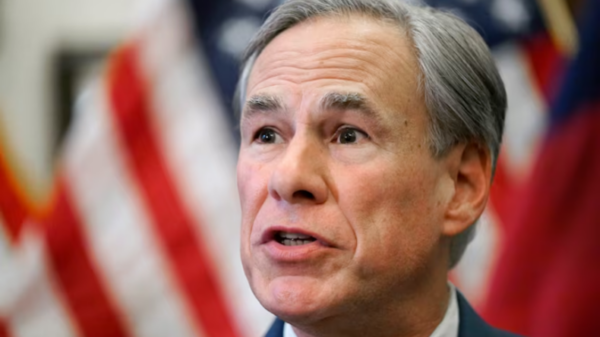
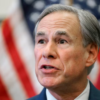
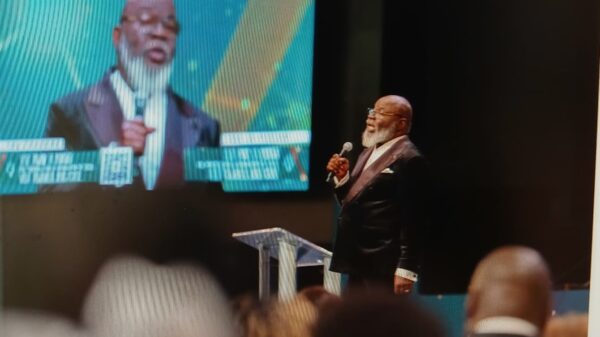
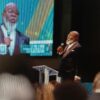
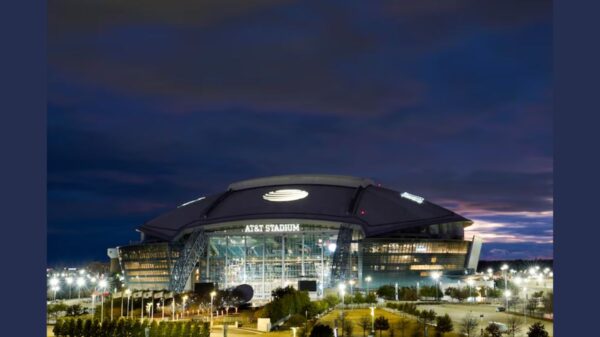

You must be logged in to post a comment Login